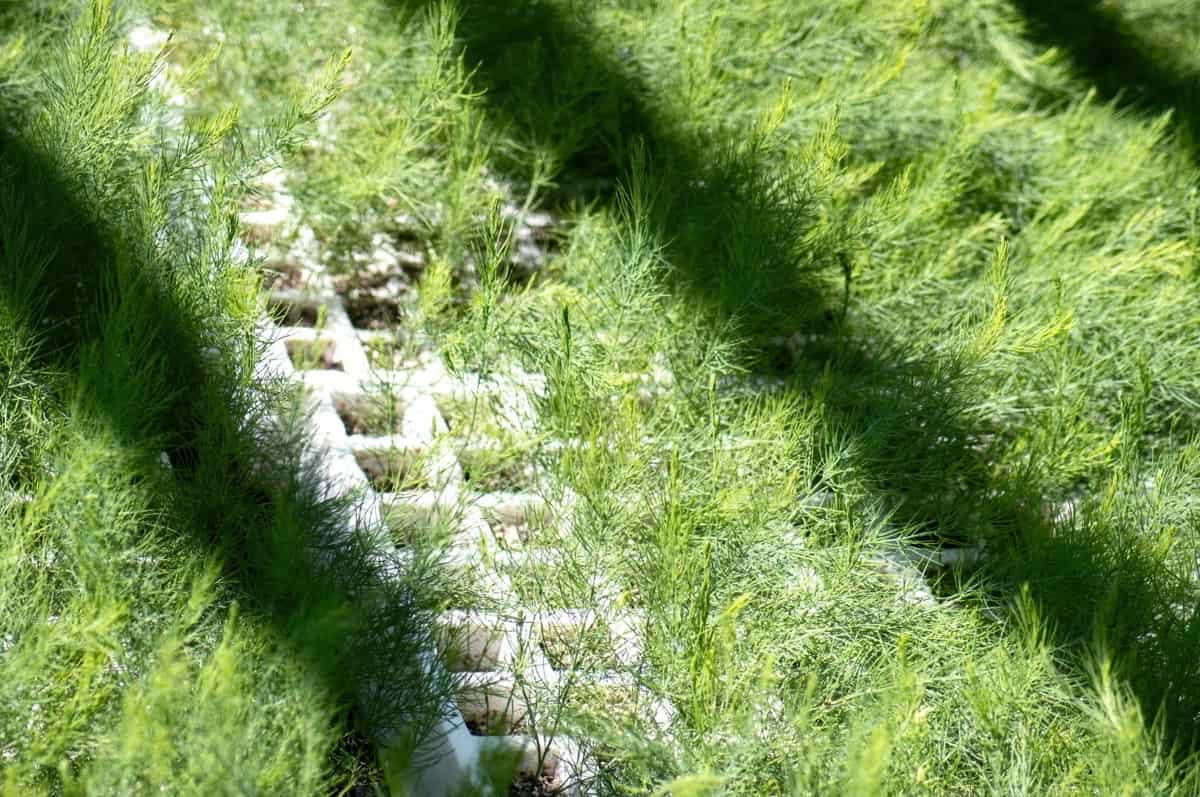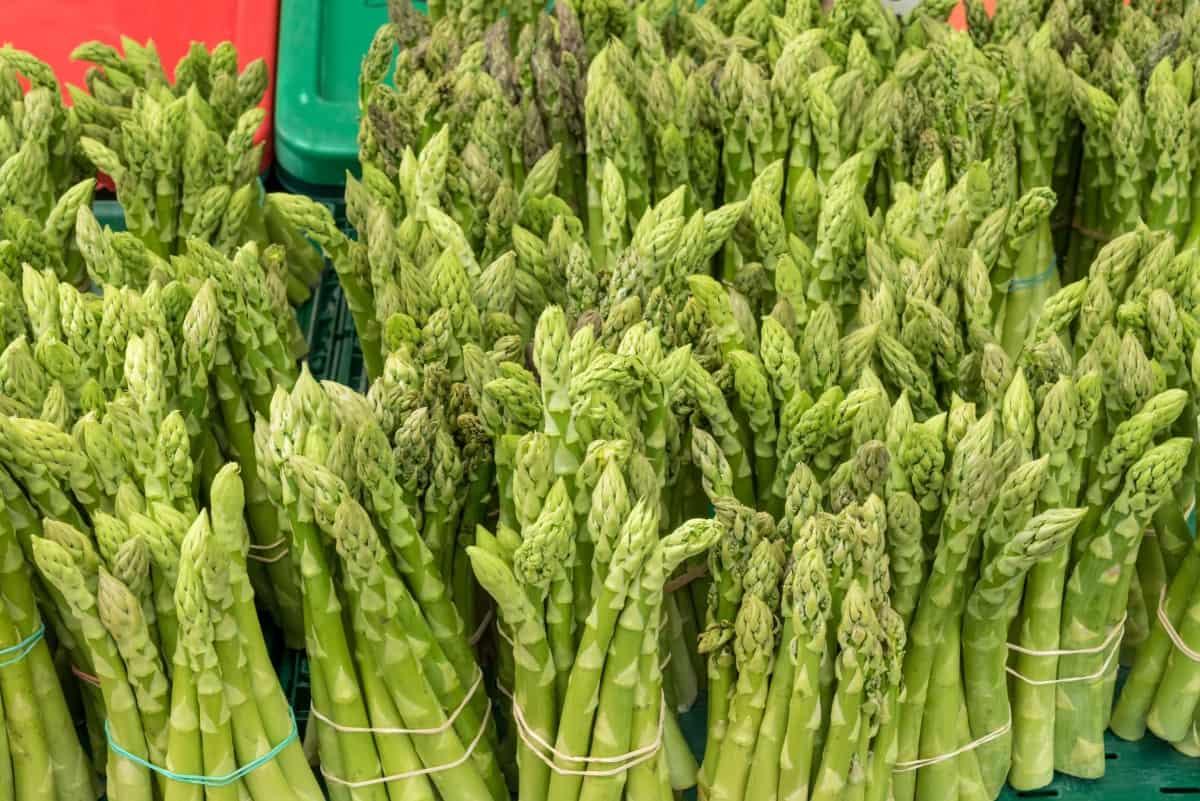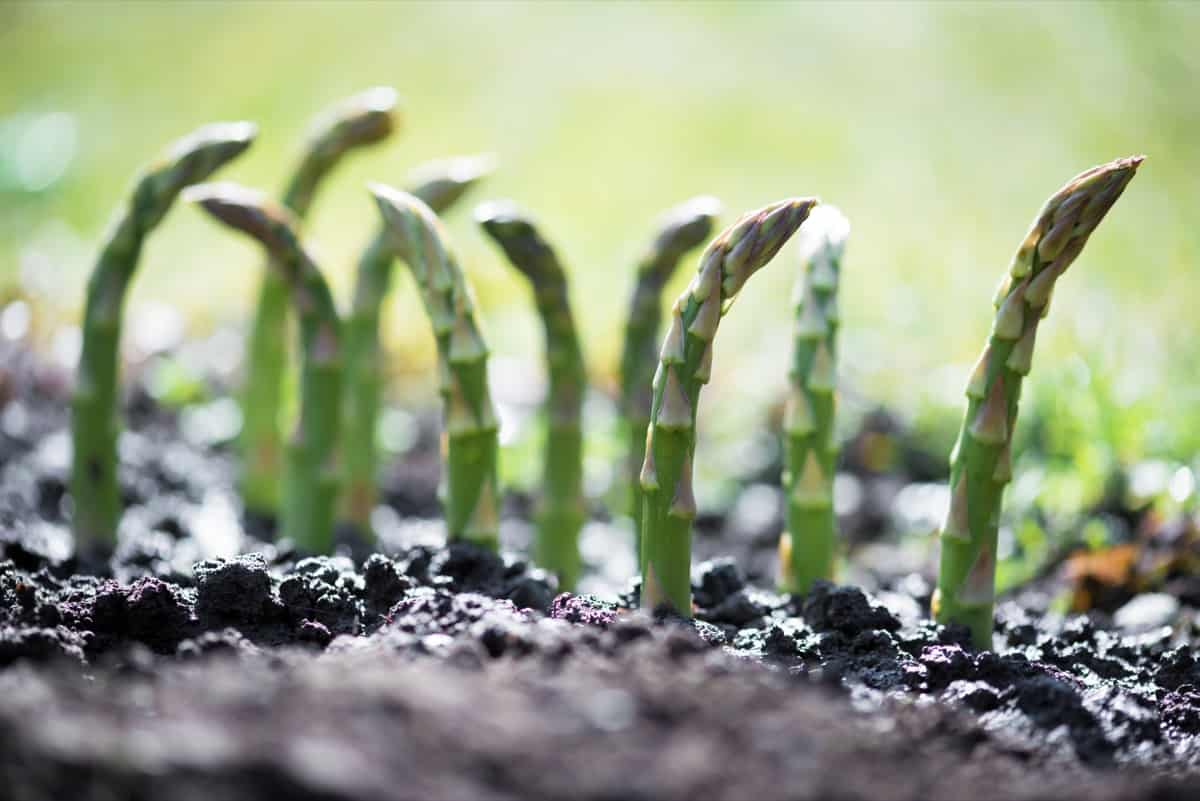Asparagus, renowned for its distinct flavor and nutritional value, is a beloved addition to gardens worldwide. Despite its hardy nature and longevity, various issues can disrupt its growth and productivity. Gardeners often ask questions like, “What happens if you don’t cut asparagus?”, “Why is my asparagus dying?”, “Why are my asparagus spears so thick?” and “Are brown spots on asparagus safe to eat?”.

Many are concerned when they find their asparagus plants falling over or when their asparagus dies over winter. These problems are largely tied to asparagus pests and diseases, nutrient deficiencies, and inappropriate care. This article will comprehensively explore common problems with Asparagus plants and present practical solutions and treatment methods.
12 Common Problems With Asparagus Plants
Preventing Asparagus Rust: Tips and Remedies
Asparagus Rust is a significant issue for asparagus growers. This fungal disease often manifests as orange, rust-like spots on the plant, leading to premature defoliation and reduced yield. To prevent this, ensure your plants have adequate air circulation and are not overly wet, as the fungus thrives in humid conditions. Routine inspection of the plants can help identify early signs of infection. Here is a simple table illustrating preventative and curative steps for asparagus rust:
| Action | Description |
| Site selection | Plant asparagus in well-draining soil and sunny locations |
| Cleanliness | Remove and dispose of infected plant material. |
| Proper Watering | Water at the base of plants to minimize leaf wetness |
| Resistant varieties | Plant-resistant varieties, if available |
| Fungicide application | Apply a suitable fungicide at the first sign of disease. |
Dealing With Asparagus Beetle Infestations
Asparagus Beetle infestations are another common concern among asparagus growers. These beetles feed on the plant’s spears and foliage, leading to yellow, wilted plants and reduced crop yield. Where feasible, monitoring beetles and their damage and manual removal can help control these pests. Alternatively, insecticidal soap or horticultural oils can treat severe infestations.
Identifying and Treating Asparagus Fern Dieback
Asparagus Fern Dieback often results from a combination of poor growing conditions and disease. Overwatering, nutrient deficiencies, and pests can all contribute to the fern’s decline. Treatment involves rectifying the growing conditions, fertilizing appropriately, and controlling any present pests or diseases.
In case you missed it: Project Report of 1-Acre Pomegranate Farming: Production Economics, and Cultivation Cost and Profit Analysis

Managing Nutrient Deficiencies in Asparagus Plants
Like all living organisms, Asparagus plants require a balance of nutrients for healthy growth. The plant may show signs of deficiency, such as yellowing leaves or stunted growth. Ensuring your soil is rich in nutrients like nitrogen, phosphorus, and potassium is crucial. Regular soil tests can help identify deficiencies so you can amend your soil accordingly with organic matter or specific fertilizers.
How to Control Asparagus Beetle Larvae
Asparagus Beetle larvae are as destructive as adult beetles, causing significant plant damage if not promptly dealt with. The larvae can be controlled using natural predators, like ladybugs and lacewings. In the case of severe infestations, applying appropriate insecticides may be necessary.
Preventing Asparagus Crown Rot in the Garden
Asparagus Crown Rot is a devastating disease that can kill asparagus plants. It’s typically caused by a soil-borne fungus that attacks the plant’s crown, causing it to rot. The key to preventing this disease is to ensure good drainage in your asparagus bed and avoid overwatering your plants. Removing and discarding infected plants can also help prevent the spread of this disease.
Overcoming Yellowing or Stunted Growth in Asparagus Plants
Yellowing or stunted growth in asparagus plants often shows nutrient deficiency or disease. Regular soil tests can help identify which nutrients are lacking so that you can amend your soil accordingly. Ensuring your plants have adequate water, but not too much, and are free from pests and diseases, can also help overcome this issue.
Identifying and Managing Asparagus Root Rot
Asparagus Root Rot is a major problem that can greatly harm your asparagus plants’ well-being and productivity. This disease typically manifests as yellow, wilted foliage and a decline in plant vigor. Managing this disease involves improving soil drainage, avoiding overwatering, and applying appropriate fungicides.
Dealing With Asparagus Beetle Eggs on Plants
Asparagus Beetle Eggs can quickly lead to a full-blown infestation if not dealt with promptly. Regular inspection of your plants for the presence of these eggs and their removal and disposal can help control this pest. If the infestation is severe, appropriate insecticides may be needed.
Promoting Healthy Spear Production in Asparagus Plants
Many gardeners wonder why their asparagus spears are so thick or not getting as many spears as they’d like. The key to promoting healthy spear production in asparagus plants is to ensure they have the right growing conditions. This includes plenty of sunlight, nutrient-rich soil, adequate water, and protection from pests and diseases. It’s also important to remember that asparagus plants need time to establish before they can produce many spears. So, patience is often necessary when growing this delicious vegetable.
Addressing Winter Dieback in Asparagus Plants
Another common query among asparagus growers is why their asparagus died over winter. Asparagus plants are perennials and can generally survive winters, especially in regions with milder climates. However, severe cold can damage or kill them. To help your asparagus plants survive the winter, it is crucial to provide proper care before the cold season arrives. One essential step is to apply a thick layer of mulch around the base of the plants.
This will help insulate the plants’ roots from freezing temperatures, preserving their health for a vibrant comeback in the spring. Furthermore, refrain from cutting the ferns until they turn brown. The ferns provide additional insulation and capture sunlight to fortify the plant’s root system throughout winter.
Understanding and Managing Excessive Thickness in Asparagus Spears
Excessive thickness in asparagus spears is often linked to the plant’s age and health. As an asparagus plant ages, the spears it produces become thicker. It’s a sign of a mature, well-established plant. However, if the spears are excessively thick and woody, it could indicate an issue. Over-fertilization, particularly with high nitrogen fertilizers, can lead to excessively thick, fibrous spears.
To manage this, ensure that you’re providing a balanced diet of nutrients for your asparagus plants. Regular soil testing can help you determine if your soil is excessively rich in certain nutrients. Adjusting your fertilization practices based on these test results can help your asparagus produce spears of an appropriate thickness. Proper harvesting is also crucial. Spears should be harvested when they’re about 8 inches tall and before the tips loosen.
In case you missed it: 9 Common Problems with Ridge Gourd Plants: Treatment and Solutions

Conclusion
While asparagus can encounter many issues, from pests and diseases to nutrient deficiencies and inappropriate care, each problem can be managed effectively with the right knowledge and approach. This comprehensive guide offers you the tools to diagnose and resolve common asparagus problems, ultimately leading to a healthier and more productive asparagus bed in your garden.
- Feed Your Flock for Less: Top 10 Tips to Save on Chicken Feed
- Ultimate Guide to Ossabaw Island Hog: Breeding, Raising, Diet, and Care
- Hatching Answers: The Top 10 Reasons Your Chickens Aren’t Laying Eggs
- Eggs and Economics: Breaking Down the Cost of Raising Backyard Chickens
- Defend Your Greens: Proven Methods to Keep Iguanas Out of Your Garden
- Ultimate Guide to Cinnamon Queen Chicken: A Comprehensive Guide for Beginners
- Ultimate Guide to California Tan Chicken: Breeding, Raising, Diet, Egg-Production and Care
- Ultimate Guide to Marsh Daisy Chicken: Breeding, Raising, Diet, and Care
- 10 Types of Chicken Farming Businesses You Can Start for Profits